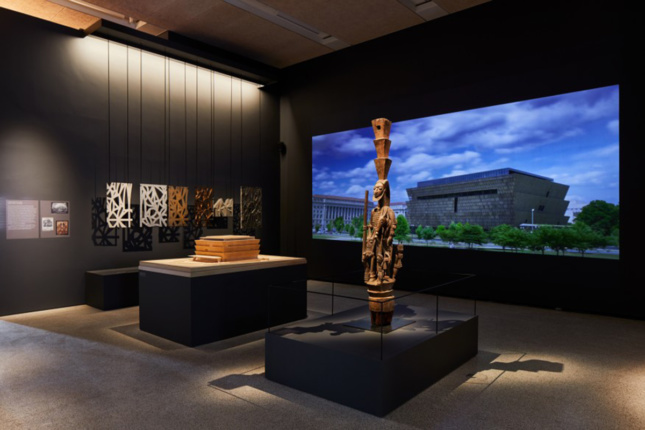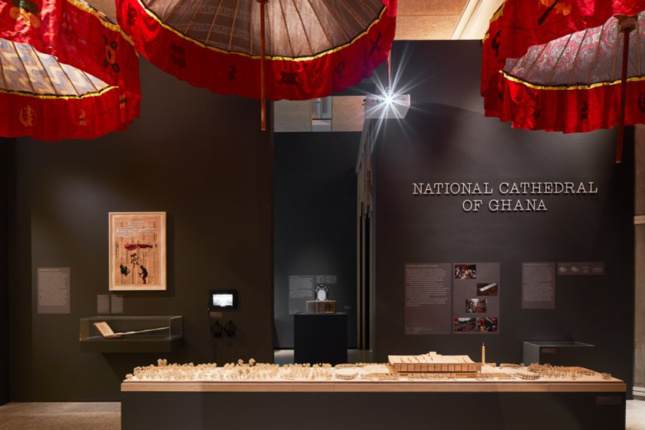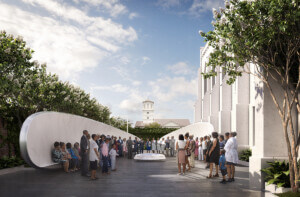A new exhibition at the Design Museum in London highlights David Adjaye’s evolving expertise in memorial design. Making Memory is on view through May 5 and showcases seven of his firm’s completed and ongoing commemorative projects.
Presented in models, photographs, material samples, sculptures, and full-scale recreations of Adjaye Associates’ monumental works, the memorial projects detailed in the show cover over a decade of architectural practice. Three of the structures on view have already been built, while four are unbuilt.
One installation is dedicated to the Smithsonian National Museum of African American History and Culture in Washington, D.C., and includes the West African Yoruba sculpture that inspired the building’s design. Another installation features a reconstruction of the Sclera Pavilion that Adjaye made for the 2008 London Design Festival, which he created in collaboration with the American Hardwood Export Council.

Adjaye’s Gwangju River Reading Room, completed in 2013 and also featured in the exhibition, details his work with writer Taiye Selasi to create a pavilion in Gwangju, South Korea, dedicated to a pro-democracy uprising in May 1980 when several students were killed at the nearby Chonnam National University. A replica of the pavilion will be set up within the Design Museum complete with texts curated by Selasi.
All of these built works, according to Adjaye, provide “an experience of time and place that is available to everyone.” The architect said in a statement that the 21st-century monument is no longer a singular representation of an event, but something that “is really used as a device to talk about the many things facing people across the planet” no matter the nation, race, or community the piece symbolizes. In his work, Adjaye seeks to create dynamic and complex spaces for people to interact with the triumphs and failures of history.
Also detailed in the exhibit are Adjaye Associates’ designs of the National Cathedral of Ghana in Accra, which was unveiled last March, and the Mass Extinction Memorial Observatory (MEMO), a spiraling stone structure currently under construction on the Isle of Portland in England. The show also features Adjaye’s recent competition entry for a new memorial in Boston honoring the legacy of Martin Luther King, Jr., and Coretta Scott King. It’s unclear whether Adjaye’s design has been chosen by the nonprofit in charge of the competition, King Boston, but an announcement is expected soon. The project is moving forward fairly quickly, having received major donations last month from the Boston Foundation and Boston University.

One of Adjaye’s most well-known upcoming projects, the UK Holocaust Memorial and Learning Center in London, is discussed in the special exhibition in tandem with the current controversy surrounding its design and location in Victoria Tower Gardens. The design, a collaboration with Ron Arad Architects, was chosen in late 2017 as the winner of an international competition to memorialize the six million Jews murdered in the Holocaust.
The project is facing new opposition from the site’s management group, Royal Parks, a London charity that says it doesn’t support the planning application and deems the Gardens “highly sensitive” to any physical alterations. The Guardian reported that Royal Parks supports the “principle of the project” but the size and design would have “harmful impacts” on the area—the Gardens fall within the boundaries of a UNESCO World Heritage Site that includes Westminster Abbey and the Houses of Parliament.











